Full frame camera users rejoice! You finally have an affordable (and viable) option in the all-in-one category. There have been a few budget options in the past (including one with an identical focal length from Tamron), but they offered what can only be considered “compromised” optics. The only viable option if you wanted good optics was a very large “great white” from Canon, the EF 28-300mm f/3.5-5.6L IS USM Lens. Despite producing good images, this lens has not ever saturated the market for a number of reasons:
- Size and weight: it literally outweighs all of the 70-200mm f/2.8 zooms at 59oz (1670g) and even in fully retracted mode it is just about as long. (Not exactly travel friendly)
- Design: it is a push/pull design (like the EF 100-400mm f/4.5-5.6L IS USM Lens), which many users are not crazy about.
- Price: though released in 2004, the 28-300L still retails for nearly $2700. Ouch!
It quickly becomes apparent why the travel crowd has not flocked to this model. It is professionally built, has an image stabilizer and good optical performance (for a superzoom), but the combination of price and size has scratched it off the list for many. Many of us (like myself) typically travel with a 2 (or more) lens solution instead. Nikon users have had a slightly more balanced option in the AF-S NIKKOR 28-300mm f/3.5-5.6G ED VR Zoom Lens. Slightly inferior optics, but a more travel friendly size and a price that is less than half that of the big Canon. But Canon shooters have lacked a comparable option…until now.
Enter the newly released Tamron 28-300mm f/3.5-6.3 Di VC PZD. 28-300mm is a VERY compelling focal range:


This lens checks all of the boxes:
- Compact size and weight for travel. At 19oz (540g), it is literally a third the weight of the 28-300L and is only 3.8in (96mm) in fully retracted mode (half the retracted length of the 28-300L).
- Fast focus (Piezo Drive), effective stabilizer (VC rated at 4 stops), effective coatings for reducing flare.
- Moisture resistance so that you can, well, travel, and not constantly worry about a little rain or spray.
- Finally, price. It comes in at under $1000, nearly a third of the price of the Canon and undercutting the Nikon by several hundred dollars.
On paper, this all sounds good. But what is the reality in the field?
First, a few notes on the build quality. I have reviewed most of Tamron’s “premium” offerings in the past year and half, including the SP 24-70mm f/2.8 DI VC USD, the 70-200mm f/2.8 VC, and 90mm f/2.8 VC Macro, and the big 150-600mm f/5-6.3 VC. All of those lenses were so good that with the exception of the 90mm Macro (I already had the wonderful 100L Macro from Canon), I added them to my kit. I have been very impressed with Tamron’s improved build quality, and these lenses have proven to be tough and durable (I have used the 24-70VC in all kinds of weather [sub-arctic to equatorial] and in half a dozen countries).
I would call the build quality a notch below these examples. It doesn’t feel as “premium” as those products. If these represent Tamron’s “L” series, then this lens is more akin to the better EF-S lenses like the EF-S 15-85mm f/3.5-5.6 IS USM Lens. That lens was my favorite travel lens when I shot crop sensor camera because of its excellent optics and stellar build quality. It covers a more modest zoom range, but that is the lens that comes to mind when I consider this lens’ build quality. The feel of the focus and zoom rings in texture (along with barrel texture and feel) are definitely similar. It’s design was a little stubbier (thicker and shorter) and it weighed a bit more than the Tamron. The greatest match for the physical dimensions in the full frame department is the older, well known EF 28-135mm f/3.5-5.6 IS USM Lens. Both that lens and the new Tamron weigh in about 19oz (540g) and are 3.8″ (96mm) long. But the Tamron, of course, has an additional 165mm in focal length, which makes it compact dimensions particularly impressive. It is smaller and lighter than Canon’s own EF-S 18-200mm f/3.5-5.6 IS Lens despite that being a crop sensor only lens and having a small zoom range.
By the way, the design, feel, and dimensions of the two new Tamron all-in-on zooms (the other being the newly released 16-300mm f/3.5-6.3 VC PZD for crop sensor cameras) and nearly identical…to the degree that they are visually almost indistinguishable. Their weight is identical, and the crop sensor lens is 3mm longer (very, very hard to determine by just looking). They both feature a double barrel zoom extension (which effectively doubles the length of the lens) and a 67mm plastic filter thread (non rotating – circular polarizer users rejoice!). Both feature a zoom lock (that locks only in the fully retracted [16/28mm] position), a lightly flocked engineered plastic barrel (just like every new lens!), a rubber gasket around the metal lens mount. Short of disassembling the lens, one has no way of really determining the degree of weathersealing on any given lens. That being said, Tamron is sticking its neck out a bit more than other manufacturers when it makes this claim because they back their products up with a six year warranty (in North America). That’s a very long warranty period on a lens whose main purpose is travel!
I find the ribs on the zoom/focus rings a little thinner and less soft to the touch than premium lenses. My initial finding with both lenses was that the zoom extension action was quite stiff, particularly starting about the 70mm position, but with a bit of use that has loosened up nicely. I don’t expect that action to ever equal the smoothness of internally zooming lenses, but my initial concerns about the zoom action have been allayed. The zoom action seems nicely damped after a few weeks use. On a positive note, I seriously doubt zoom creep will be an issue for these lenses – the zoom action is very sturdy and the front element is not particularly heavy. Both lenses have two switches on the left side of the barrel, an AF/MF switch for the focus and an ON/OFF switch for the VC (vibration compensation). The manual focus ring, while fairly narrow, is also nicely damped and focuses easily. They also feature a distance window in both feet and meters. Both lenses also feature Tamron’s new signature look (introduced first on the 150-600 VC), a handsome tungsten ring that is a little more upscale looking than the older gold colored ring. All in all, the design is attractive but not spectacular. The lenses include a petal shaped hood that is relatively small and unobtrusive. The lenses may look virtually identical, but if you look at the underside of the lenses you will spot one difference: the full frame lens (28-300) says “Made in Japan”, while the crop sensor lens says, “Made in China”. This may be one reason for the over $200 premium of the full frame lens over the crop sensor.
Another is the internal construction. Full frame sensors are far more demanding to develop for than crop sensors, which is why the crop sensor lens features a significantly larger zoom range (25.6-480mm full frame equivalent). By necessity the internal workings inside that almost identical exterior are more complex in the full frame variant with 19 elements in 15 groups as opposed to 16 elements in 12 groups within the crop sensor lens (16-300mm). There are variety of elements designed to improve sharpness, reduce flare and aberrations, and correct for distortion.
But do they work?
By and large I have come away quite impressed. I have used the lens in a variety of situations and have pleasantly surprised by the way the various compromises of developing a lens with such a broad zoom range have been handled. The nature of such lens dictates there will be compromises. My most similar point of comparison was Tamron’s own 18-270mm VC lens (version 1), which I owned and used extensively for over a year when I shot crop sensor cameras. That lens featured a highly complex distortion pattern (mustache) that was not easy to correct in post. The new lens has a moderate amount of barrel distortion and vignetting at 28mm (as shown by the brick wall test here), but as you can see, it is easily fixed by the standard Lightroom/ACR profile. The decision to go no wider than 28mm has undoubtedly helped in this regard.
But more importantly, I was actually surprised by the amount of barrel distortion present in the brick wall test because I was seeing so little in field work. There is a minor amount of pincushion distortion at maximum zoom (300mm), but it is marginal and even more easily correctable. The vignetting is clearly less heavy at 300mm, too.
I tried shooting into the sun in a variety of ways to induce flare, but I found the lens very, very resistant to flare. I was able only to produce the smallest of ghosting right at the edge of the frame in the most severe situations, but observe no real loss of contrast or color. This bodes well for those who will be traveling into difficult lighting situations.
The coatings/elements are also doing an excellent job of controlling chromatic aberrations. This is one area where I have seen a huge advantage in modern lenses over those more than, say, about 8 years old. It is rare to find a modern lens that really struggles in this area, and the 28-300 is no exception. I have shot a large variety of high contrast, potentially CA inducing scenes, but have produced only minimal chromatic aberrations. The shot above (no corrections) has a bit of purple fringing in the upper left corner, but almost all of that is alleviated by using Lightroom’s one-click correction. That’s awesome in a lens with this broad of focal range. When shooting text at the long end I can notice a bit of fringing (see below), but it disappears with the standard profile.
Color rendition is very nice. Images have shown nicely saturated, rich colors. There can be a slight loss of contrast towards the very end of the zoom range, but overall color looks pretty great here.
Highly Stabilized
[youtube=http://youtu.be/weJiuHd3y7E]
Tamron was only of the last players to the table with image stabilizers in their lenses, but they have proven to be very fast learners. Put simply, Tamron’s VC (Vibration Compensation) is my favorite image stabilizing system in use today. The application here is seamless, with the system silently (and I mean silently) and quickly going into action without any kind of jump or disturbance. It seems to hold the image rock solid in the viewfinder, even at 300mm, and gives the photographer great confidence in taking their time and choosing composition. This is one of the rare applications of image stabilization where the estimate of 4 stops of assistance may just be conservative. If you have never used a Tamron with VC before, prepare to be impressed! I had no problem handholding 1/10th second shots @300mm on a static target. I can’t imagine a scenario where I would use that skill, but it is impressive nonetheless. This shot was taken at the wider end of the spectrum, 1/6th second to help to blur the waterfall. This is a more practical example; I had no tripod but wanted a specific shutter speed.
How about sharpness? Here is where many such lenses fall apart. They simply lack sharpness over their range because it is so great. With that in mind, I had reduced expectations for the performance of this lens, but have generally been quite impressed with its performance. There are times when it simply meets my expectations, then in other shots I will be shocked by just how sharp the image is. I have been often impressed with the sharpness at the end of the focal length, as this is typically where things falls apart. Tamron has done a good job of keep the zoom end of the focal length usable. One could effectively argue that 28mm and 300mm are the most important focal lengths, as these will probably get the most use. Here are a few samples/crops that show field sharpness. I have just recently reviewed the Zeiss Sonnar 135mm f/2 lens, and it had the best micro-contrast I have ever seen (which definitely affects apparent sharpness). This lens, unsurprisingly, does not have that same performance. On the other end, stopping down to typical landscape focal range (f/5.6-f/11) produces nice sharpness that extends all the way into the corners. I am very pleased with the performance in this area, and when I stop to consider just how broad the zoom range is here, I can’t help but be impressed with what Tamron has accomplished here. The lens is very usable throughout its focal range wide open, with peak aperture being f/8 on the long end. Here are some samples and crops to show sharpness:
One other strength of the lens is the combination of a nice minimum focus distance and resulting maximum magnification. The lens can focus down to 19.3in (.49m), resulting in a nice magnification figure of 29% . While the lens is no replacement for a true macro lens, it means that you will have no problem taking pictures of flowers like this one that fill the frame.
AF Accuracy
Good sharpness can be easily ruined by poor AF accuracy, so Tamron has employed one of its PZD (Piezo Drive) hypersonic focus motors in this lens. This is the first (to my knowledge) application of this motor in a full frame lens. Tamron has two different AF drives (both brought to market in the last five years). One is the PZD drive, which seems to have been applied exclusively in their line of lenses for crop sensors (Dii). The other is the USD (Ultrasonic Silent Drive), which has been exclusively used in their full frame offerings (Di). Both use somewhat different technologies to achieve the same purpose, namely fast and quiet autofocus. Early Tamron lenses employed micromotors that were much slower and quite “buzzy” in operation. I suspect that Tamron chose the PZD motor here because of the compact nature of the lens and what was surely some shared development between this and the crop sensor lens. The system does its work here, as the AF is both fast and accurate. I have used a lot of lenses with the USD system in the last couple of years and am thus very familiar with its function. I find the focus speed and accuracy equivalent to a USD lens but note that the sound (though faint) is slightly different. I have used the lens in both One Shot and AF Servo modes with good success, though this lens will hardly be the choice of professional sports photographers!
To further tweak focus accuracy (and thus apparent sharpness on my camera body), I ran the lens and one of my 6D bodies through Reikan FoCal. With my 6D I can set a microadjustment (AFMA) at both the wide and telephoto ends of the focal length. My settings were EV 12.2, 1/400th second @ about 1 meter for the 28mm range. I got a value of +2, then +1, then +2. This is a nicely consistent result, and I went with the +2 value. I generally prefer a value as close to zero as possible, as that shows the lens is naturally well calibrated to my camera body but also means that those who don’t have the means to do AFMA on their lenses can still enjoy consistent results. A test of the AF consistency produced a consistency of focus percentage of 99.3, which is obviously very, very good.
I then repeated the tests on the telephoto end of the lens. The lens was zoomed out to the 300mm focal length, and the settings were: EV=12.2, 1/125th second @ 7 meters. Having accurate focus at the telephoto end is typically even more important because the depth of field will often be more shallow and the smaller angle of view will reveal more loss of detail if focus is missed. My first result was a -4 value, then my second test also gave a -4. I am always thrilled to get a repeatable result, so I locked it in. When I ran the test on AF consistency on the long end I got a 99.1% score. That is simply excellent results for a lens with such a broad focal range.
A word on aperture. That f/6.3 on the long end can be a little disconcerting. Some ignorant or perhaps unethical salesmen have told unwitting buyers that lenses with a maximum aperture of f/6.3 won’t AF on their camera bodies. This is not true. Third part manufacturers like Tamron and Sigma have long made zoom lenses with a maximum aperture greater than f/5.6 (f/6.3 is 1/3rd of a stop slower than f/5.6) that have all properly autofocused on Canon and Nikon bodies (due to a little trickery). It should be noted that Nikon has broken tradition and its recent 28-300mm lens has a maximum aperture of f/6.3 on the telephoto end. I’ll admit that I’m greedy; I would prefer that value to be f/5.6, but it truthfully isn’t that big of deal. If you are interested on how the lens’ aperture changes throughout the focal length, I did a quick test:
- f/3.5 is a bit of a joke. It changes to f/4 before you hit the 35mm mark.
- f/4 lasts until about 55mm, when the value changes to f/4.5
- f/4.5 lasts until about 70mm, then changes to f/5
- f/5 lasts until about 100mm, then becomes f/5.6
- f/5.6 lasts until about 195mm, then becomes f/6.3 through the end of the focal range.
My experience tells me that this is fairly typical for variable aperture zooms. My 70-300mm f/4-5.6L IS lens is one of the better performers in this area, but most zooms spend more time at the smaller aperture values of their range.
It is fortunate then that the VC is so effective, because you cannot count on a large aperture to let in a lot of light in dim lighting conditions. The consolation is that most modern FF bodies have excellent high ISO performance. This certainly helps mitigate the downside of using lenses with smaller aperture values. Still, this is entirely expected in a lens that is so compact and yet sports such a large focal range.
A variable aperture zoom lens is rarely a “bokeh monster”, but this lens fares quite well. Backgrounds are obviously not as diffused as a larger aperture lens would produce, but the transition bokeh manages to not be busy or obtrusive. If you are fairly close to your subject and using the longer end of the focal length backgrounds will quickly disappear. Rounded aperture blades produce nice, round highlights despite the smaller aperture.
Summation
In conclusion, there is no lack of applications for this great focal length. The compact size and low weight of the Tamron 28-300mm means that just about anyone can carry it and not worry about the weight. This, combined with good optics, a sturdy build (complete with some degree of weathersealing), fast, accurate focus, and a fantastic image stabilizer makes this lens a clear winner in the travel/do everything lens category. Every “superzoom” lens is by necessity a series of compromises, but somehow Tamron has been able to mitigate the effect of many of those compromises and produce a lens that does a lot of things very well. This lens is evidence of just how far lens manufacturers have come in optical development in the last few years. All of this is coupled with a six year warranty (in North America) gives the buyer some serious peace of mind. If I were to choose a lens for travel to accompany my 6D body right now, it would be this one. It is the first time that I have used an all-in-one without feeling like I will pay too great a price in image quality.
Pros:
- Very compact, travel friendly size
- Stellar optics with surprisingly few compromises
- Easily correctable distortion
- Highly effective VC system
- Fast, accurate AF
- Moisture resistance
- 67mm front element = affordable filters
- Internal focusing
- Great focal length (10.7x zoom range)
- Excellent flare resistance
- CA well controlled
- Reasonable price
- Industry leading warranty (six years in North America)
Cons:
- The majority of the focal range is at f/5.6 or smaller
- Build quality is good but not great
- Some CA at long end of focal length
- Reasonable price, but not cheap
- Fairly heavy vignetting at the wide end wide open
This review contains unprocessed images taken with the lens reviewed here. I wanted to give you an unbiased look at how the lens actually performs. The link below contains many more images plus a look at how some of them look processed.
View the Lens Gallery with More Images here:
Note: I have reviewed a retail copy of the lens provided courtesy of Amplis Foto in Canada:
Great News! I can now offer a 5% discount on all purchases at Amplis Foto, Canada’s Leading Photographic Supplier. Please enter discount code: AMPLIS52014 in your cart. It is good for everything in your cart, and is stackable with other coupons, too! It will take 5% off your entire order! If you want to go directly to this lens, click here
Gear Used:
Canon EOS 6D DSLR Camera (Body Only)
Tamron 28-300mm f/3.5-6.3 Di VC PZD Lens for Canon
Adobe Photoshop Lightroom 5 Software for Mac and Windows (Boxed Version)
Adobe Photoshop Creative Cloud 1-Year Subscription
Alien Skin Exposure 6
Purchasing your gear through Amplis Foto (in Canada) and B&H (in the United States and abroad) through these links helps fund this website and keeps the articles coming. Thank you for your support.
Error: Contact form not found.




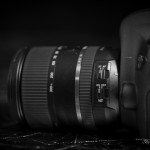
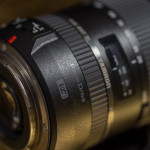
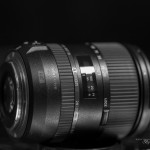
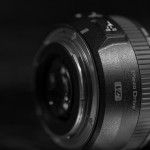
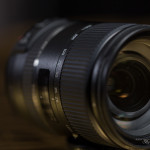
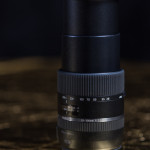
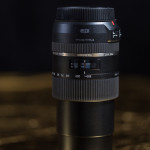
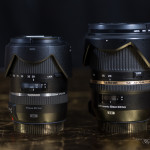









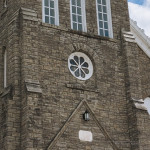
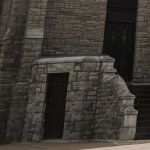
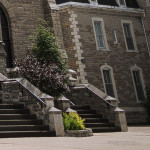



















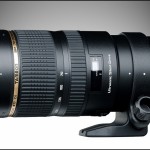
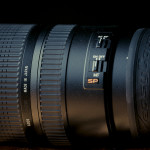

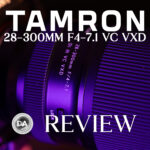
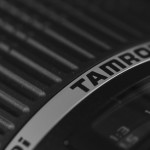
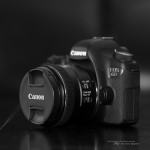
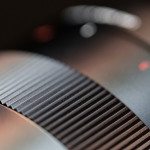

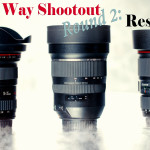

Thank you for the review. It's actually a quite interesting lens for travel, moreover with a wide angle lens to cover the under 24mm area.
I’ve just returned from a vacation that I used the lens almost exclusively on. I’ll be writing a brief companion article/travelogue with my findings. Thanks for the nice feedback.
Hello there. How much is rear element moving when zooming?
Interesting question. I checked it today and I would say the travel is a little more than 2 inches (maybe 7-8cm).
It'a a great review Dustin. I think it's first solid review of that lens in the Internet. I'm also impressed that you can set AFMA +2 at 28mm after calibration with Reikan FoCal Plus. My copy is unfortunately completly different at that focal length… I did some "review" for dpreview.com but I don't know if it will be approved by moderators so I post it also here OK?
Don't expect miracles…
From lens which is probably one of the Canon zoom lens after reverse engineering process with additional range 28-70mm added and awesome Tamron's picture stabilization.
I have that lens from few days at home. It's coming from latest (second) delivery to my home country Poland.
It's connected to my EOS 6D. I needed to calibrate that lens with my camera because at 28mm ESPECIALLY at infinity I received very soapy picture to my taste. Calibration helped but not so much as I would wish.
I used two methods, at first Datacolor SpyderLENSCAL (DSL) then Reikan FoCal Plus (RFP). With DSL I received best AFMA adjustments for wide side (W) from +14 to +16, for tele (T) side from -4 to -8. But (T) was tested from closer distance so I think it's not accurate.
+14 or +16 is high value right? So I buyed RFP to get another tool for comparison. And RFP give me values (W) +15 and (T) +3. (T) was measured from longer correct distance so I think it's more accurate.
So now I'm using in my camera values measured by RFP. You can see my all tests which I did for that lens here:
http://1drv.ms/1myVT7b
That lens working very good if it comes to image quality at range slightly over 70mm up to 300mm. In my opinion in whole range (28-300mm) absolutely minimal usable F value is F/5.6 but better use F/8 or higher if you don't want to throw that lens to the wall because of image quality. For 300mm you can start with nominal value F/6.3 and you will get very good quality pictures.
So what's with that "reverse engineering"? EXIF tell you the truth. This is screen capture from program SimpleImage (OS X):
http://i60.tinypic.com/169m4iu.jpg
Can you see that "Lens Model:" section? Yes, it's recognized as Canon EF 90-300mm f/4.5-5.6 USM from 2002 which based on EF 75-300mm f/4-5.6 III USM from 1999.
Now when you connect your camera (in my case it's EOS 6D) to the computer, EOS Utility will be launched and if you select "Lens aberration correction" from "Shooting menu", will be AUTOMATICALLY loaded to camera profile which you can see here in lower left corner:
http://pl.tinypic.com/r/flwyo9/8
Then in right place of camera menu you will see this:
http://i61.tinypic.com/20033m9.jpg
Is it working? Check it here:
http://1drv.ms/1nnrybL
"Peripheral illumin." definitely yes.
And that's why Tamron 28-300mm F/3.5-6.3 Di VC PZD A010 working very good if it comes to image quality at range slightly over 70mm up to 300mm.
What about build quality? I don't like lens hood – it' made from too elastic material. I don't like that tube extends itself when lens is directed towards the earth – extends starting from 70mm and stops at 200mm.
That's all. I hope now you know a little more about that lens.
Marcin
Marcin, interesting. It sounds like you had a very different experience with the lens than what I did, but that’s why it’s good to get information from multiple sources…and why I will share your findings here.
Great to finally read a detailed review of the Tamron 28-300. Also great to read a test of it on the camera I would be using it on, the Canon 6D. What I was wondering is if there are any full size images I could view or download? That would give me a much better idea of its sharpness compared to my current lenses.
Jealous of the north American warranty too, as all we get here in Australia is either one or two years depending on where you buy it. Thanks again for the good review.
Harry, I will add an image or two to the lens gallery page. Are you more interested in wide open performance or stopped down a bit for optimum performance?
Hi Dustin,
I would be looking at mostly shooting between f8 and f11 for the best lens performance, especially as the 6D is so good in low light and at high ISO settings. I would also be shooting a lot at either end of the focal length range. Thanks.
Harry, I have uploaded three full size samples to the lens gallery page now. Feel free to take a look. I did both ends of the range plus a middle focal length (116mm). The lens will probably be strongest in the middle of the range.
Thanks for those extra full size images Dustin. The 28mm looks pretty good to me for corner sharpness – just a little purple fringing at the edges, but not as bad as I thought it might be. The middle focal length is excellent. The long one seems a little soft but as you say, it is a handheld shot and you may have just focused on the nearest part of the waterlily leaving the rest of it just out of focus. Overall though, I am now keen to get one on the camera. The range is just perfect for me for a general or travel lens as there are many times now where I just cannot carry all the gear. Again, on the 6D it seems a good thing as it can be stopped down without worrying about shutter speeds being an issue due to the great low light ability of the 6D. Thanks again for the review and the extra shots too.
Harry, you’re welcome for the help. Enjoy the lens!
Following your on Flickr page for a while now and was hoping (and kind of expecting) a review form you on this lens and I must say that you have done a fabulous job on reviewing it.
In my personal experience with this lens for the past month and half as a professional wedding/family/event photographer who also enjoy landscape and nature photography while working at Henry's, I am very impressed with everything this lens has to offer. Many of my camera customers (Canon, Nikon, Sony)have many lovely "Pro" lenses; however, have expressed their concern about the weight of their gears and the need of changing lenses at lesser than ideal condition had caused their photography experience to be lesser enjoyable.
On a Canon 5D Mark III, either shooting a wedding or a two day MS Society bike tour, the auto focus was quick and accurate with non audible noise and the vibration control (image stability system) performed as well as my Canon 70-200mm f/2.8L IS II. With a third of weight (and a third of cost), it makes the vibration control to be even more effective than the heavy Canon L lens which "cause" vibration due to its weight and length against the balance of a human body by gravity. f/6.3 is a none issue as you have mentioned in the review since it is only a 1/3 stop over f/5.6 and what is a 1/3 stop no a full frame camera these days? Wonderfully, nothing!☺
For the first time in four years of shooting the two day bike event for MS (with Tamron 17-35mm, Canon 24-105mm, 70-200mm and 100mm L macro), with this one lens and the Tamron 17-35mm f/2.8-4 I was not tired even thought I often had to lay flat on the hard (and hot) black pavement or rough country side road for hours to support the weight of my camera system.
All in all, a great all in one small light weight lens (smaller and lighter than Canon 24-105 f/4L) with great build quality, weather sealing and image quality all at a 1/3 of a Canon L weight and price… what's not to like!
Thanks Dustin for providing such a great review and sharing your beautiful images on Flickr that inspires so many people including me. ☺
George, great to hear your positive experience with the lens. You’ve done a great job of summing up the real advantages of it. I wasn’t aware that you worked at Henry’s – very cool. I’ve done a little work with them (writing), but there has been some turnover recently and I have established a relationship with the replacements of my old contacts.
Thanks for the kind feedback!
Dustin
Dustin,
I have just read your excellent and comprehensive review of this Tamron 28 – 300 new lens.
I currently have the Tamron 70 – 300 on a Sony A 7 and A 6000. The results generally are not bad but am considering switching to your reviewed lens. I wonder if you have used this lens of mine and made a comparison. I use it for wildlife, landscape etc but I'm particularly interested if the resolution at full zoom 300mm is better or worse than the one I have.
From what you say it sounds better and I'm inclined to go with the new lens, which of course has an advantage of a wider range.
Great review – thanks again very much appreciate your comments.
Brian Nuttall
(I'm in the UK just outside London but often in the US; in fact I'm going to the Masters at Augusta in February and have a feeling this lens would be ideal.)
Brian,
That’s a tough question. I have used the 70-300 VC from Tamron and quite liked it, but I haven’t compared the image quality side by side of the two. I would suspect that the 70-300 is slightly better at the focal lengths that the two overlap. It would be extremely rare for 10+x zoom to exceed the image quality of a 4+x zoom range.
At the same time, I don’t think you would take a huge image quality hit and the focal length is, of course, exceptional in the 28-300mm. It comes down to your own priorities.
Dustin
Hi Dustin,nice review !!
I would like to know if have you tested the Canon 70-300 DO ??
I know one starts at 28mm and the other one in 70mm, but what about the iq??
Thank you,
Regards,
Juan
Juan, thanks for the feedback. I haven’t tested the 70-300 DO. It is praised for its compact size, but the IQ has left most people disappointed, and the bokeh is thought to be a little odd.
Hi dustin, i am just curious, how much worse is the image quality or sharpness of this lens compare to Tamron 24-70mm USD given at the same focal length? and since i am at it, what about the image quality or sharpness of this lens compare to Tamron 70-300mm USD given at the same focal length too? Thx in advance if u ever reply since you reviewed and own the lenses i mentioned which i am trying to compare. much appreciated. 🙂
Roy, the lens does not compete optically with the 24-70 (which is an exceptionally good lens covering a much smaller focal range). The 70-300 is slightly better at most focal lengths, although the 28-300 VC may have a marginal advantage on the long end. It is almost impossible for a superzoom to truly compete optically with more dedicated focal length, but Tamron has done a good job putting some great image quality into the 28-300 VC despite the compromises.
Dustin, i own the tamron 24-70 and 70-300. I just wanna know how much worse is the compromises on image quality for such superzoom lens like this one. If the image quality doesnt fall too far from the both lenses mentioned/compared, i dont mind to grab one for traveling. You know, the practicality of saving the hassle from changing lenses with impromptu moment you wanna snap during a vacation. Anyway, just read your another article with this tamron 28-300 at quebec city. i guess that pretty much make me confident to grab one of this lens for traveling without much regret. thx Dustin. 🙂
You’re welcome. They’ve done a good job of making the lens good enough that you can use it without taking too much of a resolution hit, particularly when stopped down a bit.
Based on your review, I purchased this lens for travel purposes, and I wasn’t disappointed in the overall quality of the optic. However I had the feeling some of the pictures could be sharper. After spending this afternoon calibrating my copy using the Magic Lantern dot-tune module, I went for +2 wide and -6 tele AFMA settings on my 5DMkIII. I’m happy to say that’s nicely consistent with your results, Dustin! I wish I would have had the time to do this before I took the lens on holiday as there is a marked improvement especially at 300mm, but alas… I’ll reap the fruits of my labor next time 🙂
Michiel, doing a good AFMA is the first thing I do with any lens. It’s amazing how much difference it can make, and makes you wonder how often this is the problem when someone reports a lens as being “soft” when reviewers have found otherwise. I’m glad the lens is working out for you; it is a great travel option!
How is the optical from previous version? apart from no IS and silent, fast auto focus?
This is a significant improvement in every way, including optically. It isn’t far behind the much more expensive (and massively large) Canon version.